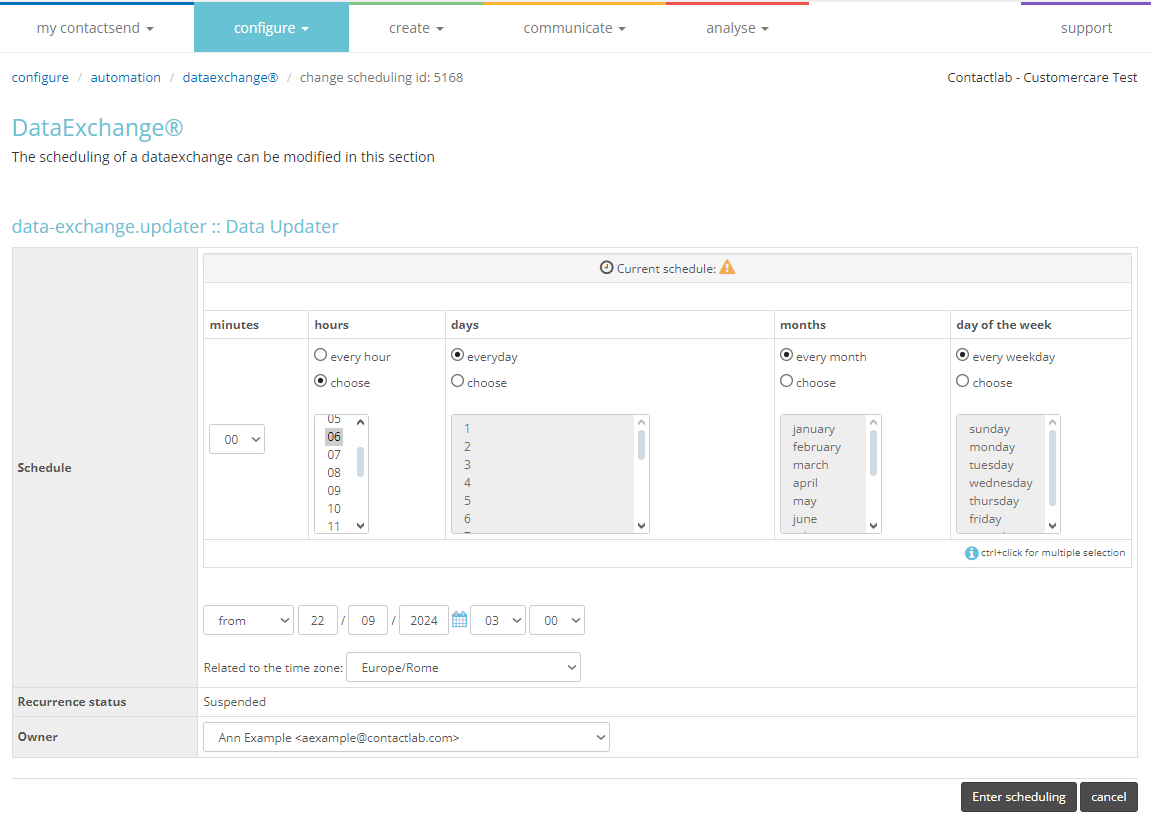Data Exchange
DataExchange is a Contactsend system that allows advanced data exchange management. It is not included in the base contract but must be activated separately.
The configurations can be accessed in the section Configure > DataExchange.

How it works
The system exchanges data in two directions (from client to Contactsend or vice versa).
From client to Contactsend, via the Data Importer and Data Updater modules. The system imports users from a “source” into the previously configured database in Contactsend. This source can be the client's database or a file (csv/xml) published in an sftp space.
-
Dat Importer
This module imports the source content into the corresponding Contactsend database. You can choose to import in overwrite mode or append mode (adding to existing records).
-
Data Updater
This module allows you to define what action to take for each record: deletion, insertion as new, or updating. Updating means that the record retains the same primary key, but the content of various fields is updated. The source must include an “operation” field that defines which action should be performed (D = delete; I = insert; U = update).
From Contactsend to client via the Data Displacer and Data Exporter modules. The system exports users from the database in Contactsend (Displacer) or statistical data (Exporter) into a file in the shared sftp space with the client.
-
Data Displacer
This module exports the contents of a database to the client.
-
Data Exporter
This module exports feedback statistical data to the client so they can use it for analysis with their systems.
How to execute the modules
Data Exchange is available in two modes:
- Cron: schedules the time when communication between the module and the client's database occurs. You can set the cron by clicking on the name of the configured module. It's possible to schedule multiple data exchanges per day or limit them to certain days of the week or months, as well as define the start and end dates of the process. You can also modify the default time zone. Finally, you can temporarily pause execution by clicking the pause button
and resume it by clicking the “Activate recurrence” icon

- On-demand: the client manually runs the desired module from the Configure > Data Exchange section by clicking the “Run now” icon
The "on-demand" mode is always available.
Error codes
For any error codes and their explanations, which are received by e-mail in the Data Exchange report, please refer to the appropriate documentation at this link, page 35.
Download failed operations report
To download the report with the details of the failed operations, simply click on the paperclip icon.
